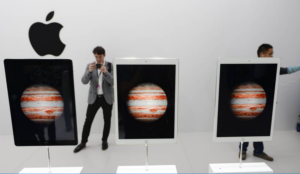Future of Tablets, iOS 9 Update, Fonts for Mobile Web, Breadth vs. Depth, September Book Picks: Managing Articlization in a Mobile World, TFP’s Infographic Pick of the Week, DPS 2015 Tip: Installing Tools to Create Article Files, Adobe Digital Publishing Solution v2015.4 Release: Features, Enhancements, and Bug Fixes
Welcome to Technology for Publishing’s roundup of news and tips for media industry pros! This week, we’re sharing stories about so-called ultra tablets and whether they point to the future of computing, new features in the just released iOS 9, how serif typefaces are falling out of favor as publishers optimize for the mobile Web, why some publishers’ business and content models emphasize depth over scale, and more.
- “The conventional wisdom about tablet computers—that as a category, they’re no longer all that compelling, and might even be dying out—is wrong.” That’s from Wall Street Journal columnist Christopher Mims, who, despite current data indicating otherwise, predicts tablets with keyboards are the future of computing. With last week’s rollout of the iPad Pro, which includes a keyboard cover, a high-power processor, and an ultra-high-resolution screen, and the overall trend toward lighter and thinner notebooks with detachable keyboards, like Microsoft’s popular Surface, Mims argues we’ll see a reversal in current thinking as these “ultra tablets” become increasingly viable for “real work.”
- On a related note, check out TechCrunch’s review of the just released iOS 9, an update it says delivers “a powerful” iPad experience. Along with iPad-exclusive multitasking features, it details a range of other improvements, including Proactive Assistance, a feature geared toward “making your smartphone smarter,” as well as new search, content blocking, and maps functionality. Other highlights include the launch of Apple’s much-anticipated News app, updated Apple Pay features, performance enhancements, and more. Elsewhere, Gigaom offered its analysis of the new operating system, saying, “iOS 9 is the fullest realization yet of Apple’s intention to reduce all of the Internet to just one more app.”
- As publishers rush to optimize for mobile—with the name of the game being speed—serif fonts are falling out of favor, Digiday reports, highlighting Google’s recent decision to change its logo to a simpler sans-serif typeface. The problem with print-era serif fonts is that they are heavier, more complex, and therefore larger than sans-serif alternatives, which makes copy more difficult to display on mobile devices and slows load times. “There was a debate around it for a while, but we seem to agree that in the digital environment, sans-serif is generally better for reading,” John Newman, creative director at Imulus, says. What’s more, the aesthetic is cleaner and more modern, which also plays well in the digital world, the article notes.
- When it comes to growth, what’s better: breadth or depth? For publishers, the answer isn’t always clear, points out Folio. The thought often is, simply, the more traffic you drive, the more you can charge for ads—meaning in theory audience size matters most. But that’s not always true, say two media CEOs who have found that “selective audience development” and immersive, high-quality content closely tailored to targeted audiences brings more value to their advertisers. In an interview with Folio, John Lerner of Breaking Media and Katherine Nicholls of Niche Media share their insights on why cultivating a close, engaged audience nets their businesses more advantages than sheer scale.
On the Technology for Publishing Blog
- This month our Recommended Reading focuses on articlization and how to manage—and monetize—this new way of delivering content in the mobile world.
- To help you better focus your content efforts, our Infographic Pick of the Week brings you recent demographic data along with fresh insights on who’s using which social platforms.
- This week’s Adobe Digital Publishing Solution Tip from Monica Murphy explains how to install tools to convert InDesign and HTML files to the new .article file format used in DPS 2015.
- Also, Adobe just released Digital Publishing Solution Version 2015.4, which includes new features, performance enhancements, and numerous bug fixes. We give you all the details on the TFP blog.
Image: The Wall Street Journal
Check out our blog for highlights of interesting and noteworthy stories from the publishing world every Friday, and sign up for TFP’s This Week in Publishing newsletter. Think we missed something great? Let us know! Leave a comment below or drop us a note.
Posted by: Monica Sambataro





